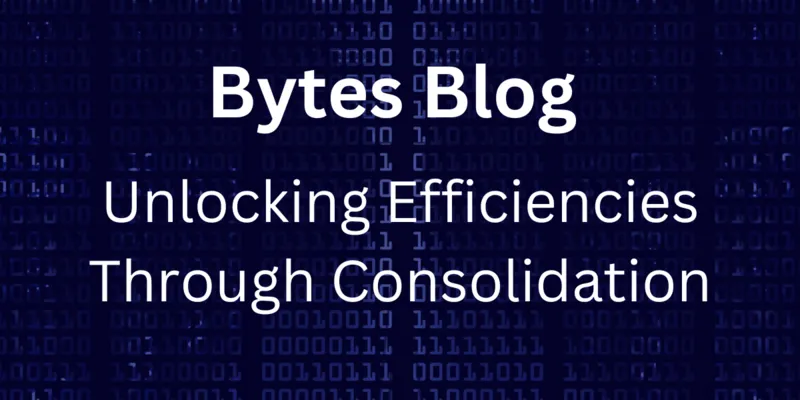Bytes Blog: Unlocking Efficiencies Through Consolidation

Tuesday 27th February 2024
Contributor: Giuseppe Damiano, Reviewer: Gennaro Migliaccio, Editor: Daniela Miccardi
_______________________
Solution consolidation is not a new trend, but rather, one that has had increased attention in recent times.
More and more organisations today are investing time and effort into consolidation projects, to address and resolve challenges around shrinking skilled resources, cost optimisation, reducing operational effort and increasing efficiency.
At the same time, it is interesting to note how the market responds to this trend with several vendors striving to diversify their offering in order to be seen as providers of platforms rather than point products.
We have observed endpoint security vendors extending their portfolio into vulnerability management, vulnerability management vendors including patch management and CNAPP features, and SIEM and SASE vendors extending their portfolio to include EPP and XDR.
These changes are hard to ignore, and overtime we continue to see an increasing number of leading security vendors following this approach to widening the portfolio and covering additional security domains.
Why Now?
It is possible to speculate that recent global events, causing a degree of economic uncertainty, might be a potential cause. Maybe not the root cause but certainly a triggering one.
Another might be the increased awareness of customers that multi-solutions platforms indeed deliver a great deal of value when it comes to cost/benefit. Or maybe it’s because security has grown in complexity, and the amount of solutions required to protect organisations has expanded in line with it, effectively driving the need for compensation.
Is the situation really that bad?
In general, the number of network and security tools adopted by an organisation tends to be proportional to its size or budget. On the other hand, its history – specifically past mergers and acquisitions – is also seen as playing a relevant role on the matter.
However, the problem starts when an organisation realises that they have (and pay for) multiple solutions for the same purpose. And while it might be acceptable to employ more than one email security control or firewall platform in cases where the business needs require it, having several tools deployed for the same purpose or security area is really not a good practice, and certainly not a good way to invest available budget.
Tools Explosion
Those organisations who – in past times – have chosen to adopt a best-of-breed approach for all security controls are now presented with increasing costs for licensing, maintenance, support, and training. Something which today is a topic of conversation for board members and senior leadership teams.
While having the best available solutions is hard to argue against in terms of value delivered in the respective areas, questions are often raised around:
“Do we really need all these solutions”
“How many people will we need to run, manage and maintain them all?”
“What about training needs (and associated costs)?”
For all the above reasons – and probably more – quite a lot of our customers today are looking for, and exploring any available options to implement consolidation, and that is a great thing at least in my opinion.
Is it all really worth it, though?
Every change comes with some pain, but equally there cannot be progress without change.
In this case, consolidating solutions has the potential to bring a lot of benefits, including cost optimisation and increased operational efficiency.
As these exercises have an impact on skills gap and Return on Investments, they now on the agenda for business leaders as well as technology teams.
Perhaps organisations are starting to realise that limiting the number of tools used does not necessarily carry a negative outcome for their overall security posture.
At a time where many leading vendors on the market offers platforms delivering controls for several different areas, there should not be any room for uncertainty or hesitation.
If you have any questions, or would like to learn more about any of the topics covered in this blog, please email our friendly team via [email protected].
Want to keep informed? Sign up to our Newsletter

